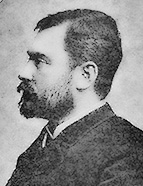

A key element associated with Oliveira Martins’s use of psychological imagination (Moniz Barreto) in constructing his sweeping narratives is verisimilitude, which he considered “the foremost of our intellectual demands.” In his synthetic and comprehensive approach, “probabilities often compensate for the lack of evidence. There is no fantasy or fiction in history thus conceived,” a method he also applied to pre-Neolithic civilisations, which he described as a “synthetic reconstruction of societies” ( Elementos de Antropologia [Elements of Anthropology], p. 20). Verisimilitude, in this context, was drawn from intuition, supposition, and the historian’s understanding of the people of his own time—based on the belief that human character persists across eras, though he distinguished between the “simple” and the “sophisticated.” This belief also underpinned his (already contested) assertion that “we can explain, define, and intuit what nebulously resided in the souls of the simple from other ages” ( Correspondência… [Correspondence], p. 267). Martins’s realist narrative method also involved drawing inspiration from the physical locations where the events he sought to describe had occurred. For instance, the scene depicting the landing of D. Pedro IV’s liberal army at Pampelido was written after a visit to that northern Portuguese beach. Similarly, during his 1894 travels through Castile, he visited sites linked to the Battle of Toro with the aim of immersing himself in the environments frequented by Afonso V, gathering material for the writing of O Príncipe Perfeito [The Perfect Prince] ( Cartas Peninsulares [Peninsular Letters], 2018, introduction by César Rina).
However, i n the absence of reliable information, Martins employed another narrative strategy: using enunciative markers to suggest suppositions, thereby tempering claims to historical truth. This is evident in Portugal Contemporâneo , with expressions such as “it seems that…,” “perhaps,” or “if it was true….” He also explored multiple possibilities for particular events, such as whether the death of D. João VI was caused by poisoning, or he posed speculative questions about the future, particularly regarding the political situation of his time in 1826. Another of Martins’s methods was to draw analogies between Portuguese historical figures and those from antiquity (historical, literary, or mythical). For example, Infante D. Henrique, in his vision of empire, is portrayed as the “Portuguese Scipio,” embodying “the mercantile genius of Hanno and the military genius of Hannibal” ( Os filhos… [The Sons ... ], pp. 18 and 198). D. Pedro is likened to the “Portuguese Hamlet” ( Idem , p. 236), while Herculano is compared to Cato. From a reception standpoint, the historian's psychological and synthetic reconstruction methods proved highly effective, including in educational contexts, an area of significant concern for him.
This work is financed by national funds through FCT - Foundation for Science and Technology, I.P, in the scope of the projects UIDB/04311/2020 and UIDP/04311/2020.
